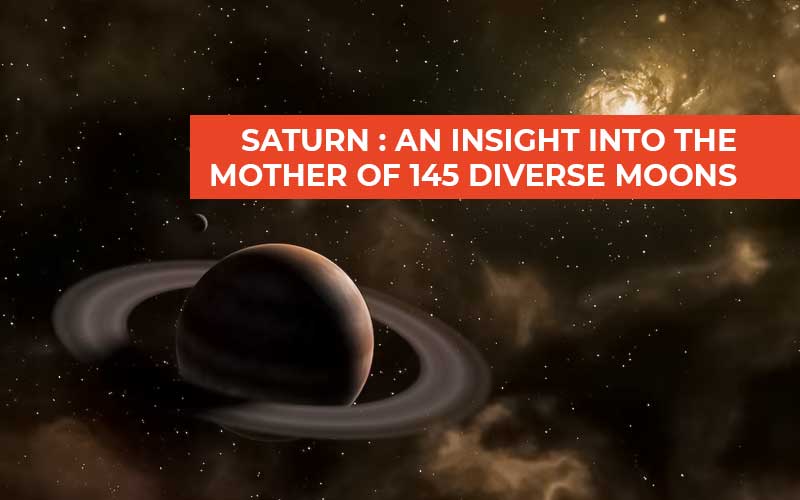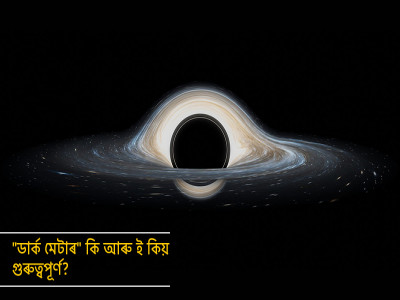
Saturn: An Insight Into The Mother of 145 Diverse Moons
Saturn's origin can be dated to the beginning of the solar
system, around 4.5 billion years ago, when gravity brought together gas and
dust to create this gas giant. It is the second-largest planet in the solar
system, with an average radius that is around nine and a half times that of
Earth. Its primary constituents are hydrogen and helium.
The gas giant planet Saturn is known for its magnificent rings, but it also has the largest collection of moons in the solar system. The magnificent rings that surround Saturn are composed of countless numbers of tiny pieces of rock and ice that have been covered in other substances like dust. Saturn's strong gravitational pull is theorised to have drawn in comets, asteroids, or fractured moon fragments to produce these rings. There are seven primary rings, which are designated D, C, B, A, F, G, and E in the order of their discovery. Each of Saturn's rings orbits the planet at a distinct rate, resulting in an ever-evolving and dynamic spectacle that amazes both astronomers and amateurs.
But Saturn is a fascinating planet for more reasons than simply its rings; it also has a large and diversified family of moons. From the gigantic Titan, the second-largest moon in the solar system, to tiny moonlets, Saturn, the sixth planet from the sun, boasts a rich and varied tapestry of natural satellites. As of right now, it has formally recaptured the title of "planet with the highest number of moons," making a significant comeback and displacing Jupiter in the process. Astonishing discoveries were made in the most recent investigation carried out by an international team of scientists; 62 additional moons were found, raising Saturn's official count of natural satellites to a total of 145.
The largest moon of Saturn, Titan, stands out in the solar system. Its atmosphere is thick—the only one in the solar system that is known to be thicker than Earth's—and its surface is covered in rivers, lakes, and oceans of liquid methane and ethane. The atmosphere of Titan is also quite intriguing since it can help us understand the early stages of the evolution of our own planet.
From 2004 until 2017, the Cassini spacecraft orbited Saturn, providing a plethora of knowledge about Saturn's collection of moons, including those that were previously undiscovered. For instance, the tiny, icy moon Enceladus harbours an ocean of liquid water beneath its frozen surface. It has also been observed that the geysers on the moon emit a plume of organic-molecule-containing water vapour. This finding increases the likelihood that life exists on Enceladus.
The latest discovery of 62 new moons comes hot on the heels of another discovery earlier this year when 12 new moons were discovered orbiting Jupiter, which briefly made Jupiter the title holder of the planet with the largest collection of moons in the solar system in February. Some moons were observed before but not confirmed, and the researchers used a technique called shift and stack to find the moons. The technique senses smaller, fainter moons by shifting a set of sequential images based on their speed across the sky. The data is combined by stacking the images, which enhances the moons' signals.
The majority of recently discovered moons are irregular, which means that their orbits are far away, tilted, and frequently eccentric or retrograde. These particles (which make up a moon) may have been grabbed by Saturn's gravitational pull in the distant past, according to astronomers. The International Astronomical Union is scheduled to recognise all 62 of these new moons as official moons in the following month. These 62 new moons are currently identified with numbers and letters.
In a nutshell, Saturn is a planet that continues to captivate and fascinate planetary scientists as well as the general public due to its assortment of varied moons, both discovered and undiscovered, in addition to its stunning rings. With each new discovery, we learn more about our own planet and the creation of the solar system.
Trivia: Saturn has the second-shortest day in the solar system, taking only 10.7 hours to complete one full rotation of its axis. In Saturnian time, a full orbit takes roughly 29.4 Earth years to complete.
Disclaimer: The opinions expressed in this article are those of the author's. They do not purport to reflect the opinions or views of The Critical Script or its editor.

Newsletter!!!
Subscribe to our weekly Newsletter and stay tuned.

















Related Comments